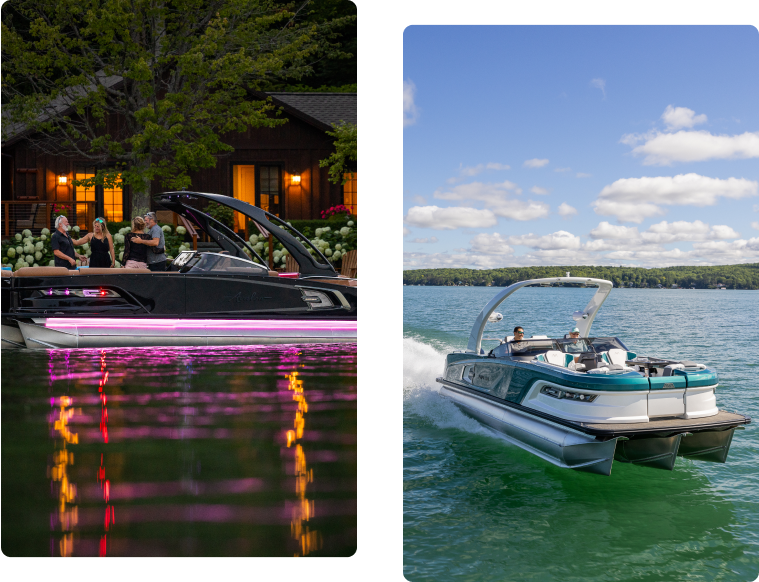Mastering boat terms is essential for safe and effective boating. Whether you’re operating a small boat, a twin hulled boat, or larger vessels like pontoon boats, understanding nautical terminology improves communication, enhances safety, and ensures smoother navigation on the water.
This guide will introduce you to key nautical vocabulary, from the side of a boat to essential safety equipment like personal flotation devices. We’ll cover everything from basic boat anatomy to navigational concepts, ensuring you’re well-prepared for aquatic adventures. So, let’s dive in and explore the language of the sea!
The gunwale, pronounced “gunnel,” is the upper edge of the boat’s side. It often features a toe rail for added safety and structural integrity.
The transom—the flat surface that forms the vessel’s rear—is located at the stern of the boat. Many boats have a swim platform attached to the transom for easy water access.
The keel is the central structural element of the hull, running from bow to stern along the boat’s bottom. It provides stability and helps with directional control.
The running surface refers to the part of the hull that contacts the water when the boat is in motion. This area is crucial for determining the boat’s performance and efficiency.



Embark on 50 years of award-winning pontoon excellence with Avalon. Elevate your journey through unrivaled artistry, cutting-edge design, and supreme quality and service.





From the basic anatomy of a boat’s hull to complex navigation concepts like the left hand side (port) of the ship, each term plays a crucial role in your boating adventures. For more information on speed and performance, check out this guide on choosing a fast pontoon boat, which can elevate your boating experience with enhanced performance and excitement.
As you continue to learn and practice these nautical terms, you’ll become more confident and capable on the water. Boating is a lifelong learning experience—there’s always something new to discover. So cast off those docking lines, start your journey into the boating world, and enjoy the freedom of life on the water!
Copyright © 2024 Avalon Pontoon Boats. All Rights Reserved. Sitemap
Copyright © 2022 Avalon Pontoon Boats. All Rights Reserved. Sitemap
One of our Pontoon specialist or a local dealer near you will contact you to help configure the boat that matches your exact needs.
Thank you for taking the time to contact us with your questions and concerns. We love being available for you electronically. Recently, though, we have begun to receive duplicate emails sent to multiple people in the company. In an effort to increase our efficiency and improve our customer service, we would appreciate it if you use our online contact us form to the right so we can automatically direct your request to the correct people on our team.
If you are in need of service regarding a warranty, please contact your dealer (find your local dealer here). Contact us only if your dealer’s service does not meet your needs.
Thank you,
The Avalon Team
903 Michigan Avenue,
Alma, MI 48801